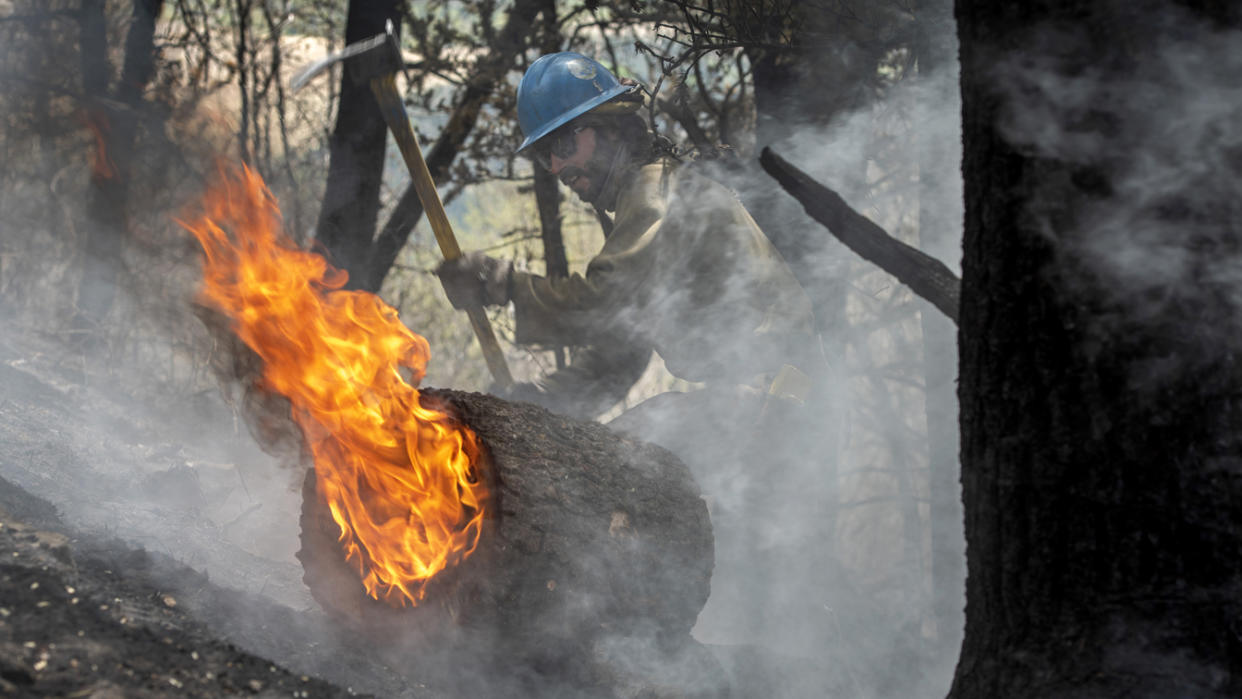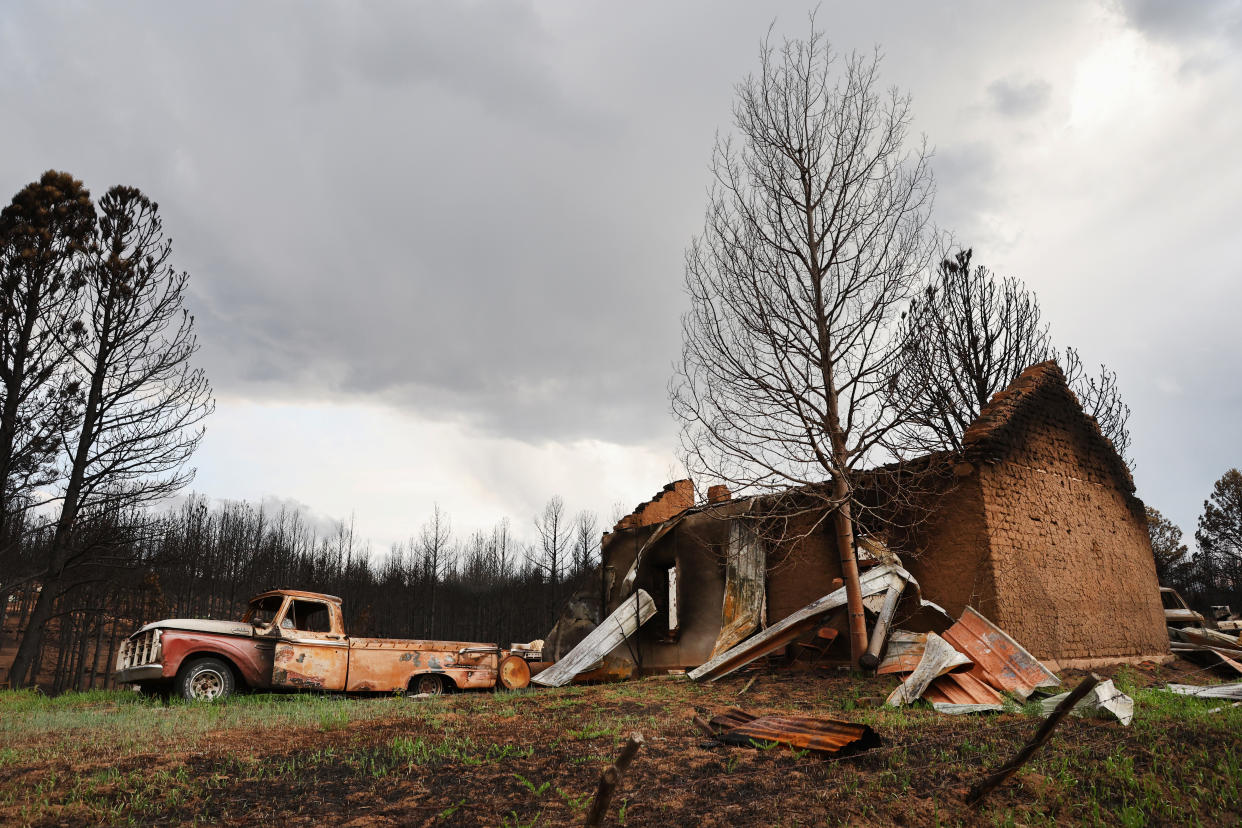U.S. Forest Service admits climate change miscalculation in New Mexico fire
U.S. Forest Service employees made several mistakes, including underestimating the impact of climate change on conditions in the Southwest, when planning a controlled burn to reduce the threat of wildfires in New Mexico earlier this year, according to a report from the agency released Tuesday.
As a result, the burn exploded into the largest fire in the state’s history, forcing thousands of residents to evacuate their homes.

“Climate change is leading to conditions on the ground we have never encountered,” wrote Forest Service Chief Randy Moore in the foreword to the report. “We know these conditions are leading to more frequent and intense wildfires. Drought, extreme weather, wind conditions and unpredictable weather changes are challenging our ability to use prescribed fire as a tool to combat destructive fires. This spring in New Mexico, a pile burn of hazardous logs that started in January, smoldered underground for months, persisting through multiple snowstorms and freezing temperatures, before resurfacing as a wildfire. That type of event was nearly unheard of until recently in the century-plus of experience the Forest Service has in working on these landscapes.”
After decades of aggressive fire-fighting strategies designed to keep wildfires away from population centers, many U.S. forests have become overgrown, increasing the need for prescribed burns that thin overgrowth and reduce the risk of fire spreading out of control.
“Over the past dozen years, prescribed fire has accounted for an average of 51% of the acreage of hazardous fuels reduction accomplished, or an average of 1.4 million acres per year,” the report noted. “Meeting the objectives of the IIJA [the Infrastructure and Investment Jobs Act] is likely to require the Forest Service to conduct prescribed fires on between 2.5 [million] and 4 million acres annually, nationally.”
A backlog of scheduled prescribed burns dating to Department of Interior furloughs during the 2018-2019 government shutdown "built a sense of urgency to accomplish projects to 'catch up,'" the report stated.

The prescribed burn in New Mexico was started in April and almost immediately took an unexpected turn. “Within hours of declaring the test fire a success that day, multiple spot fires were reported outside containment lines and there were not enough resources or water to rein them in,” the Washington Post reported.
As of Tuesday, the Calf Canyon/Hermits Peak Fire had burned 533 square miles, making it the largest fire so far this year in the United States. The area burned nationally this year — 5,000 square miles — is more than two and half times the national average for the past 10 years at this point in the season, according to the National Interagency Fire Center.
In addition to causing warmer temperatures, climate change significantly impacts the water cycle, both of which experts say contributed to the conditions that resulted in the New Mexico fire getting out of hand.
"Along with below normal precipitation, the seasonal snowpack was significantly compressed, as it did not start until January then abruptly melted off much earlier than average," the report stated.
The Forest Service will have to more effectively factor climate change into its plans, the report stated.
“Fires are outpacing our models and, as the final report notes, we need to better understand how megadrought and climate change are affecting our actions on the ground,” Moore concluded.



